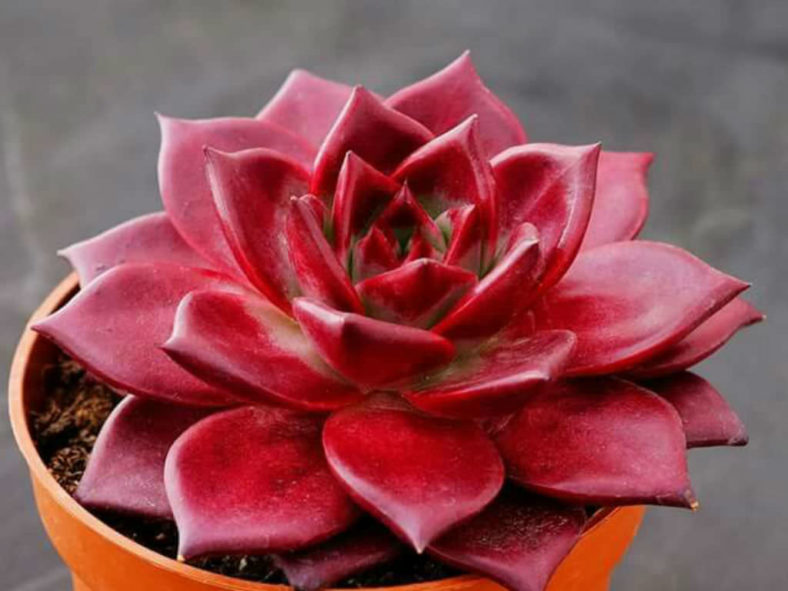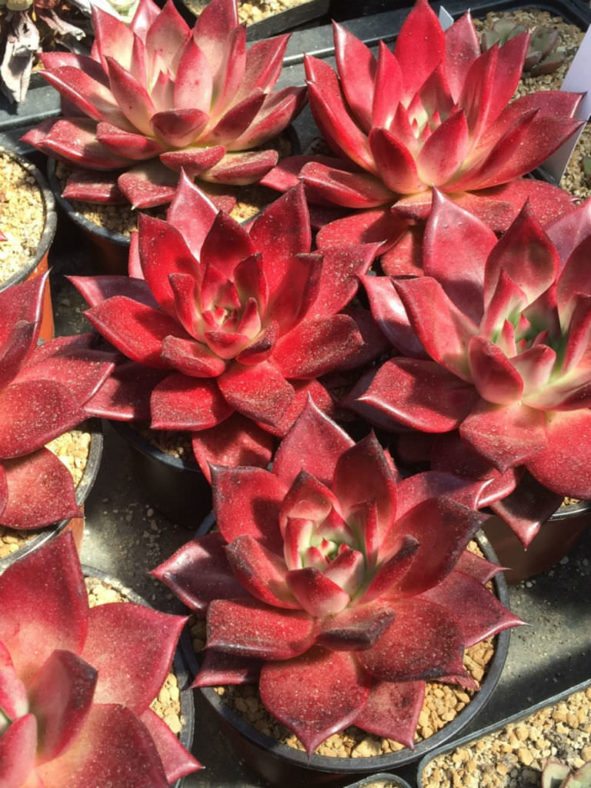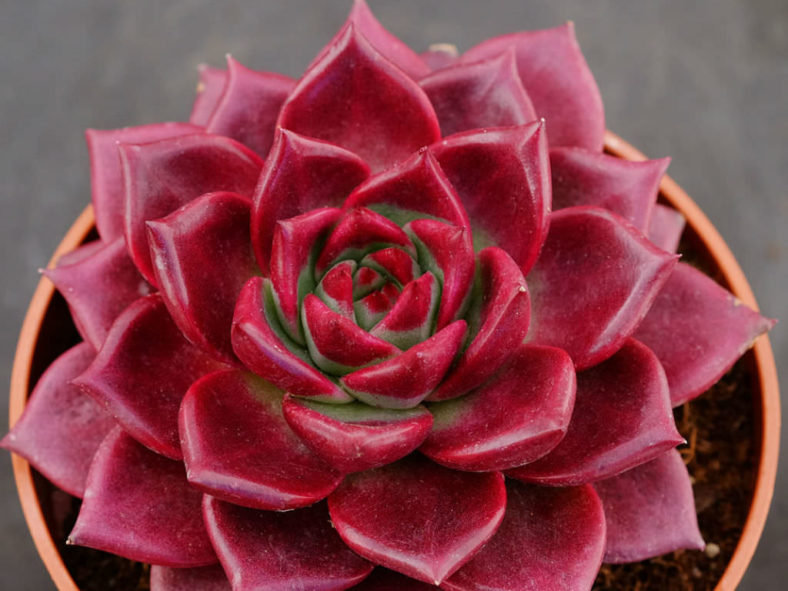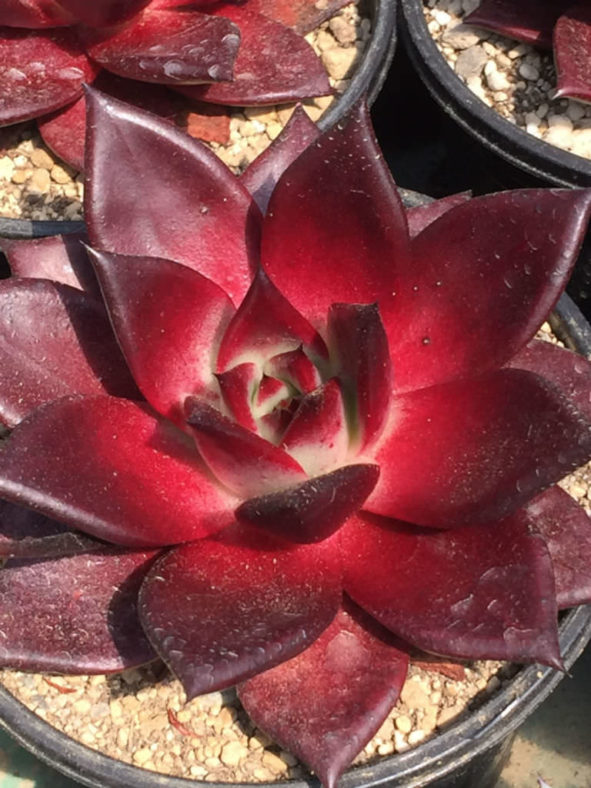Scientific Name
Echeveria agavoides 'Romeo Rubin'
Scientific Classification
Family: Crassulaceae
Subfamily: Sempervivoideae
Tribe: Sedeae
Genus: Echeveria
Origin
Echeveria agavoides 'Romeo Rubin' is a selection of Echeveria agavoides 'Romeo'.
Description
Echeveria agavoides 'Romeo Rubin' is a beautiful small succulent that forms a dense, usually solitary rosette of deep purple-red leaves with a rigid, spiny point. The rosette can grow up to 4 inches (12 cm) tall and 8 inches (20 cm) in diameter. The cooler temperatures enhance the vibrancy of the leaf color.
The red flowers are slightly smaller than other Echeveria agavoides cultivars and have a yellow tip. They bloom from spring to summer.

How to Grow and Care for Echeveria agavoides 'Romeo Rubin'
Hardiness: USDA hardiness zone 9b to 11b: from 25°F (-3.9°C) to 50°F (10°C).
Most common Echeveria species are not complicated succulents to grow, provided you follow a few basic rules. First, be careful never to let water sit in the rosette, as it can cause rot or fungal diseases that will kill the plant. Additionally, remove dead leaves from the bottom of the plant as it grows. These dead leaves provide a haven for pests, and Echeverias are susceptible to mealybugs. As with all succulents, maintaining careful watering habits and providing ample light will help ensure success.
Most Echeveria can be easily propagated from leaf cuttings, although a few are better propagated from seeds or stem cuttings. To propagate a leaf cutting, place the individual leaf in a succulent or cacti mix and cover the dish until the new plant sprouts.
Repot as needed, preferably during the warm season. To repot a succulent, ensure the soil is dry before repotting, then gently remove the pot. Knock away the old soil from the roots, removing any rotted or dead roots. Treat any cuts with a fungicide.
See more at How to Grow and Care for Echeveria.
Links
- Back to genus Echeveria
- Succupedia: Browse succulents by Scientific Name, Common Name, Genus, Family, USDA Hardiness Zone, Origin, or cacti by Genus
Photo Gallery
Click on a photo to see a larger version.


